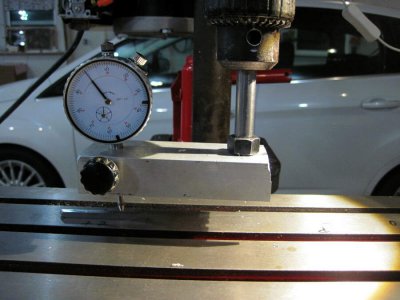- Joined
- Jun 4, 2019
- Messages
- 91
I seem to be missing something about tramming and how it applies to a mill with a fixed head, viz., a re-purposed drill press.
My problem is that when I make a pass, the leading edge takes down some metal but the following edge also does. This is most conspicuous when using a fly cutter.
Not sure but I think this indicates that the traverse of the table is not square with the spindle. I can not change the spindle so the obvious is to shim the base of the table.
If I put an indicator on the table at one end at zero and run the table across to the other end, the delta is about 2 mils. This is probably enough to cause the problem.
I put 5 mil shims between the table and the machine base on the low side but get the same results.
I then tried 15 mil shims and nothing changed.
Am I chasing the wrong spook?
Jack
My problem is that when I make a pass, the leading edge takes down some metal but the following edge also does. This is most conspicuous when using a fly cutter.
Not sure but I think this indicates that the traverse of the table is not square with the spindle. I can not change the spindle so the obvious is to shim the base of the table.
If I put an indicator on the table at one end at zero and run the table across to the other end, the delta is about 2 mils. This is probably enough to cause the problem.
I put 5 mil shims between the table and the machine base on the low side but get the same results.
I then tried 15 mil shims and nothing changed.
Am I chasing the wrong spook?
Jack


